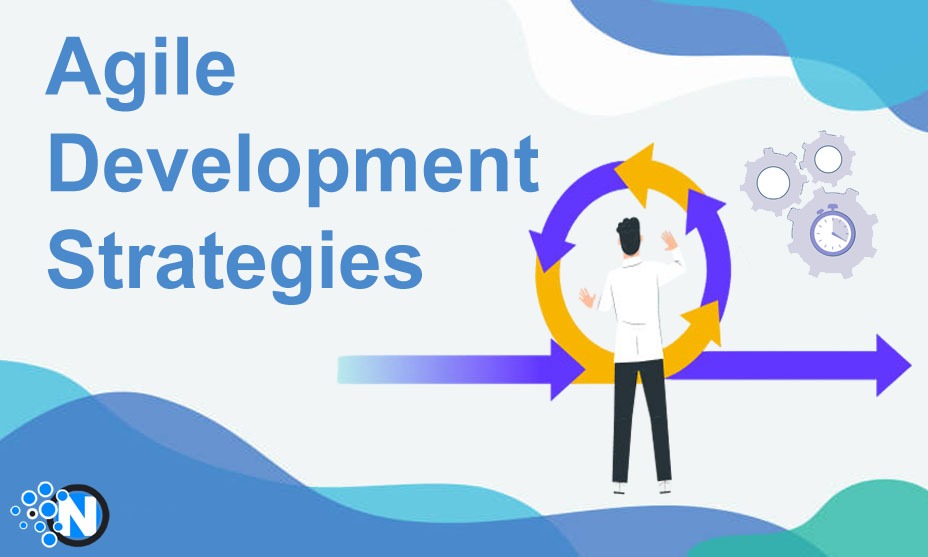Agile Development Strategies for Efficient Software Building

Agile development strategies have enabled developers to design more efficient software. With the rise in the demand for adaptable tools to accommodate the rapidly changing requirements, it becomes an absolute requirement to bring innovation in the traditional methods. In this way, you will be able to create products that are more fascinating than before. Agile methods help you focus on collaboration, continuous improvement, and exclusive development of different components. In this article, we will elaborate on important agile development strategies that you must incorporate in your software development agency.
What is Agile Development?
Agile development is an incremental way to create new software to make them more adaptable to changing conditions. With the rapid rise in business requirements recently, it is compulsory to have exceptional tools that can deliver the desired work in every condition. By emphasizing small and iterative processes in the development procedure, agile development will lead you to increase the collaborative capacity of the software. In addition, it breaks down the long and complex steps into smaller chunks which you can follow continuously to take your experience to an advanced level. As a result, it enables the software to manage rapid changes for better alignment with customer needs.
Top Agile Development Strategies
In the under-section, we will look forward to some of the top agile development strategies to help you build incredible software infrastructure.
1 – Emphasize Customer Collaboration
Efficient software building requires continuous and open communication between the developers and stakeholders. Further, it involves customers, end-users, and business owners to design the fundamental principles of software functioning. Regular feedback from these parties helps in the development of more efficient tools to understand the evolving needs and adapt them accordingly. You should look forward to integrating the techniques, like user stories, prototyping, and frequent demos, to facilitate better collaboration. Similarly, you can fulfil the actual requirements of the users.
2 – Adopt Iterative Models
Agile development also leads you to develop and follow a comprehensive approach to developing software. By breaking the larger processes into smaller ones, you can work on them more ergonomically. These small increments are also known as sprints or iterations in technical terms. This strategy ensures that you have worked on every component of the tools to evolve its features. Moreover, this iterative development allows you to bring continuous improvements to the software structure. The reason is teams can learn from each step and use the productive team insights in the next step.
3 – Create Cross-functional Teams
Making a cross-functional team is another effective strategy for developing efficient software by following the agile development features. Such a team comprises all members, including designers, testers, and product managers. Possessing a team like the one mentioned in your industry will let you perform all the necessary tasks in an enhanced manner, directing you to produce a more collaborative and dynamic working environment. Hence, you will make quick decisions as the dependencies on the external departments reduce to a greater extent.
4 – Use Agile Frameworks
Utilizing agile frameworks can provide you with better solutions to generate more efficient software. Scrum and Kanban are the two most popular options that offer a set of ceremonies or events to design the development process. Sprint Planning, Daily Stand-ups, Sprint Reviews, and Retrospectives ensure a regular cadence and effective communication with the team and other associated members. Additionally, it delivers the opportunity to identify the main challenges and roadblocks. Consequently, you can develop more transparent solutions and collaborate with the team members to prioritize the efficient software development procedure.
5 – Prioritize and Manage Backlog Effectively

Managing the backlog helps you fix the routine and priority list to carry out the vital procedures first. Furthermore, you can enlist all the tasks involving regularly refining and reprioritizing different items. A well-managed product backlog will help you perform all the necessary tasks within the specified period, guaranteeing you to build efficient software. It helps the team perform the most compulsory functions first and ensures that you have processed all the necessary details for the respective sectors. Ultimately, you can save time assessing the completed and incomplete procedures repeatedly.
6 – Embrace Continuous Deployment
The next agile development strategy is continuously integrating and deploying the critical components to improve the software development process. CI involves changing the codes in the database multiple times a day to check, identify, and resolve integration problems. Similarly, CD helps you automate the deploying process of codes to produce efficient tools. Hence, it significantly reduces the time between developing and deploying functional codes, allowing for quicker feedback and more frequent releases.
7 – Continuous Improvement
Software development is a complex task, as it involves numerous steps. Some are very easy to follow, while others make you feel frustrated. Consequently, you can make certain mistakes that spoil the whole charm and functioning of the tool. However, agile developments enable you to work in shorter segments. Any failure will not make your work from the very beginning. In this way, you can change the codes readily to find the ideal one. Besides, this strategy helps you continuously improve the software’s infrastructure.
8 – Implement Test-Driven Development
Lastly, we have listed test-driven development as one of the best agile development strategies for efficient software building. Implementing this will help the developers write a test before making actual code. In this way, they can ensure that the code will provide the desired functionality when integrated into the software. Additionally, it reduces the risks of regressions and promotes a more robust codebase to confirm all the functions.
Final Verdicts
Agile development strategies are the best ways to efficient software building. With time, it is now the first demand of the modern business landscape to provide them with software that can accommodate the changing requirements swiftly. In addition, it involves multiple features to automate several repeated tasks to save enough time for the labor to perform other useful and necessary operations. Agile strategies help you split the longer procedures into smaller sprints to generate and deploy the code to add the desired functionality. Thus, you will authorize your agency’s credibility in the market.




